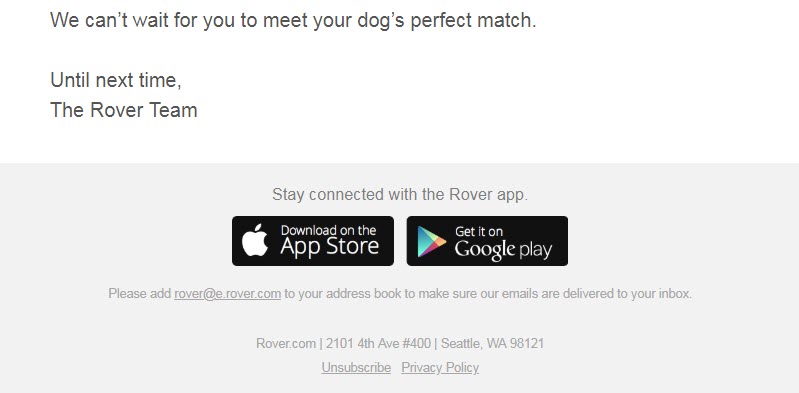
It’s the law: 7 email marketing rules you should know
Did you know there’s a law in the U.S. about sending emails? It’s called the CAN-SPAM Act. And if you’re “promoting or advertising a commercial product or service through electronic communication,” you have to comply with the law or face some hefty penalties. VerticalResponse is here to break through the jargon and help you understand the rules.
Before we dive in, let’s quickly look at the law’s history. In 2003, President George W. Bush signed the CAN-SPAM Act bill into law to stop the onslaught of spam that was landing in everyone’s inbox. The law was subsequently updated in 2008.
“Some small businesses may be aware of certain conditions specified within the CAN-SPAM Act, but I think that very few are familiar with the entirety of the law,” said Jesse Ignell, a marketer for Computer Market Research. With Ignell’s help, we’ll outline the seven key components of the law that you, the email sender, should know and follow:
1. Tell readers where your email is coming from
The law focuses on transparency. The “From,” “To” and “Reply to” labels need to tell the recipient where the email comes from. In other words, these fields should contain the sender’s name or the business name.
2. Write an honest subject line
Your subject line should reflect what’s in the email. You can’t be deceptive here. In other words, don’t write “Claim your $500 gift card” in the subject line to get people to open an email that’s really about a new product. Here’s a snapshot of a few to-the-point subject lines:

3. Recognize you’re sending an ad
We strongly suggest that you get permission from all of your subscribers before sending emails, especially with the European Union’s General Data Protection Regulation in effect. And most email service providers, like VerticalResponse, require you have permission before sending any email through their service. The only time you don’t have to warn readers about ads? If everyone on your list has agreed to receive your emails.
4. Give a physical address
Each email must contain the postal address for the person or business sending the email. Doing this helps to show your business is a credible one, and offers another way for your recipients to opt out of your emails if they need to.
5. Every email needs an easy opt-out option
Your subscribers must be able to easily unsubscribe from your messages. You have to give this option to your subscribers in every message you send. At the bottom of the email, you can provide a link to unsubscribe. Here’s an example of an opt-out option (look for the “Unsubscribe” link at bottom):

6. Honor opt-out requests quickly
If a subscriber wants off your list, you have 10 days to do it. You can’t charge any fees for this service, ask for any personal information or sell the person’s contact information to another company. Most email service providers will manage this process for you, which is another plus to using an email service provider.
7. Monitor what others do for you
If you hire another company to manage your email list, you are still responsible if the company breaks any of these rules.
Bottom line: Use good judgment and respect your email subscribers. When you set up your next email campaign, it doesn’t hurt to check it against this list of rules to make sure everything is legit.
If you’d like more information, The Federal Trade Commission offers a compliance guide on its site to help small businesses comply with the CAN-SPAM Act.
Join 140,000 small business owners
Editor’s note: This article was originally published in May 2014 and has been updated for accuracy and relevance.
© 2018, Contributing Author. All rights reserved.
 SUBSCRIBE
SUBSCRIBE 



Some great points but I think the author should have clarified that these rules apply to American companies. Tough new laws (CASL) are coming in July 2014 for Canadian companies.
Hello!
restpharm ,